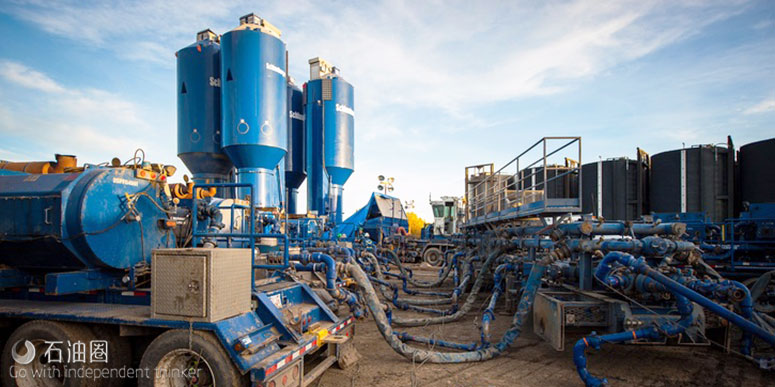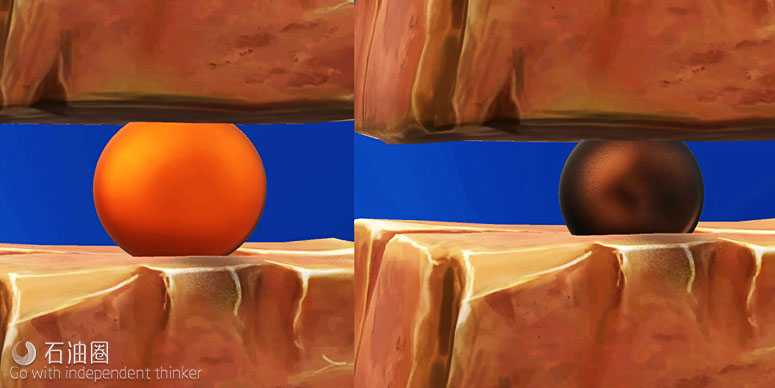Over the years, proppant technology has evolved from sands to engineered, high-strength proppants, cured and partially cured resin-coated proppants to prevent ?nes, lightweight and deformable proppants, and coated walnut shells for improved transportation and reduced embedment.
The latest in the line-up could be expandable proppants, which are nearing commercialisation from a technology developer in the US.
“We’re working to understand the in-situ application of force in the fracture network to control and manage development of that network,” says Andy Sherman, president and chief executive of Euclid, Ohio-based Terves.
“We now have the ability to actually put in a small proppant that can swell, apply force and extend the fracture network. It can provide localised stress and strain deep in the formation, both near and a distance from the wellbore.”
XO Prop is a part of Terves’ Exalon family of rigid expandables. The Exalon material is an expandable rigid polymer, and its use as an expandable proppant is patent pending.
“We are making polymer beads that have a reactive material embedded in them. They contain a high concentration of ultra?ne or nanoparticles that react with the formation chemistry to permanently expand,” Sherman, a ceramic and chemical engineer, says.
“The polymer is semi- permeable to the completion water or formation water, which along with the ?ller particle size controls the rate of the reaction. The ?llers inside the polymer react with the water, carbon dioxide, or other ?uids and undergo an oxidation or hydration or carbonation or carboxylation reaction, depending on the chemistry and temperature of the ?uid.”
The proppant is engineered to take one to two days to fully expand, although other coatings and formulations can be applied to reduce or accelerate swell times. Terves is manufacturing XO Prop in extruded rod and sphere shapes from 20 mesh down to 100 mesh in size, which can be moulded or fabricated into complex shapes.
“What we’re able to do is offer an expansion, on demand, to deliver a force, apply pressure, and change shape.”
Andy Sherman,
Terves
Through the development cycle, Sherman says, Terves has focused on three effects on the formation — the initiation and extension of new fractures, the ability to offset closure force and delay pinch-off of ?ne fractions, and the ability to offset embedment in softer formations to maintain permeability in the formation.
The company believes the expandable mechanism can be added to or used as an alternative or enhancement to partially cured and resin- coated proppants for gravel-pack applications.
“They swell in volume and can lock in proppant packs before signi?cant closure forces are applied, so they can be used to stabilise formations and prevent proppant ?ow-back and sand production,” Sherman says. “We think these unique capabilities have tremendous potential to help operators and service companies manage the wellbore- reservoir interface.”
Gaining knowledge
Terves began working to prove the expandable proppant principle internally in 2013, and in 2015 won a Department of Energy grant to develop expandable proppants for in-situ stimulation. Terves manufactured a pelletized expandable material and placed it in an API conductivity cell, where it demonstrated the pellets could expand and increase fracture width against 2500-4000 psi constraining force without degrading conductivity.
In other words, Sherman says, “we showed that you could get a larger aperture and delay closure without degrading conductivity. It’s not like an expandable rubber or polymer which deforms as it swells to create a seal.”
Another research grant the following year allowed Terves to build on the research and development.
“We scaled up to pilot scale to enable a lot more testing and did a lot of fundamental chemistry work to control expansion, time, strength and modulus of the materials. We were able to tailor the expandables to operate reliably in the 70-90 degrees Celsius range, where a large percentage of tight oil and gas formations operate,” he says.
To understand the impact on well productivity, Terves partnered with FracGeo to model the proppant force and expansion effects in simulated fracture networks, Sherman says.
“FracGeo used state-of the art geomechanical simulations to predict the impact of the new proppants on the fracture network development and recovery to answer questions such as: Can we address the natural fractures and extend those at high angles to the main fracture? Can we extend the drainage ?eld and keep the fractures open longer? And can we increase the aperture and offset the closure of the natural frack to extend the network and slow the decline curve?”
Modelling showed a positive result, he says. “Yes, it appears we can initiate and extend fractures. We can apply enough force to overcome the rock strength,” he says.
“Although they didn’t predict a major increase in initial production, according to simulations and modelling, there was a signi?cant delay in the decline curve by increasing and retaining fracture aperture after initial ?uid draw-down.”
FracGeo carried out a simulation of well production, inserting the new proppant materials into a previously developed Wolf Camp high carbonate well stage model, which forecast a 23% increase in cumulative production over the ?rst 24 to 28 months of well production.
Ongoing work is looking into how XOProp is expected to perform in different formations with different rock types in the clay-shale-carbonate-silica mixtures of typical formations, as well as proppant transport and placement effects.
Formations with higher shale and clay content are more deformable and undergo creep. Hard and conventional proppants can embed in those formations, rather than act as pillars to create open ?ow paths, he says, particularly in the far ?eld where proppant coverage is reduced.
Simulations indicated that the expandable, somewhat deformable but rigid XOProp can “do good things for the softer formations,” Sherman says. “We are working with more realistic rock properties and stress states to really try and understand this.
“We’re also starting work on understanding different proppant placement and pumping scenarios and their effect on production curves. We hope to verify placement in large-scale transport simulations in the lab to prepare recommended pumping and placement pro?les as a function of rock properties in the ?eld.”
The inspiration for XOProp stems from the rusting of iron. When iron rebar rusts in concrete, it expands and fractures the concrete. The company also produces dissolvable metal alloys that corrode (Upstream Technology 1/2016).
“I spent the ?rst half of my career developing coatings and alloys to stop corrosion. Now I’m engineering corrosion reactions to make things happen,” Sherman says.
“Expandable concrete and freezing water can fracture hard rock with expansions around 3 to 4%. We can generate 10 times that expansion without generating ?nes that can damage the formation,” he says.
“We have not pushed the technology to see how much force can be applied, but related research on expanding concrete indicate that 15,000-30,000 psig should be achievable.”
Terves worked with various activators and matrices to ?nd the ideal composition that would expand reliably under downhole conditions before coming up with XOProp, which in current formulations expands on the order of 30%.
“We’re reaching out to the industry to help translate this new capability into effective tools for enhanced productivity and efficiency,” Sherman says. “We aim for a ?eld trial in 2018.”
Terves is seeking speci?c ?eld opportunities or problems to simulate and test to validate in the lab before the ?eld trial.
Beyond that, Sherman says, other possibilities for the Exalon line could include self-expanding centralisers, casing patches and other devices. “It’s a world of possibility,” he says.

 石油圈
石油圈

